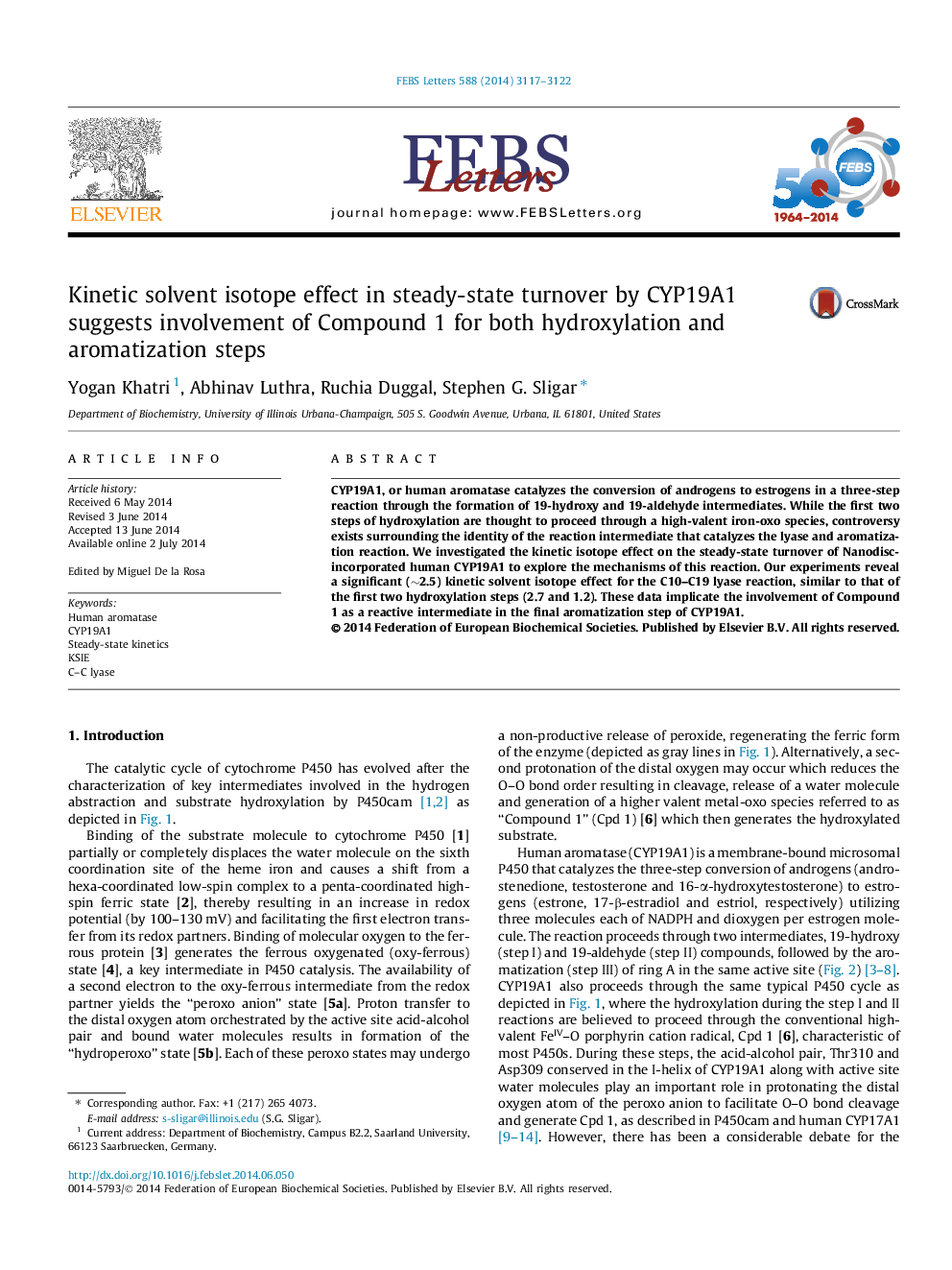| Article ID | Journal | Published Year | Pages | File Type |
|---|---|---|---|---|
| 10870183 | FEBS Letters | 2014 | 6 Pages |
Abstract
CYP19A1, or human aromatase catalyzes the conversion of androgens to estrogens in a three-step reaction through the formation of 19-hydroxy and 19-aldehyde intermediates. While the first two steps of hydroxylation are thought to proceed through a high-valent iron-oxo species, controversy exists surrounding the identity of the reaction intermediate that catalyzes the lyase and aromatization reaction. We investigated the kinetic isotope effect on the steady-state turnover of Nanodisc-incorporated human CYP19A1 to explore the mechanisms of this reaction. Our experiments reveal a significant (â¼2.5) kinetic solvent isotope effect for the C10-C19 lyase reaction, similar to that of the first two hydroxylation steps (2.7 and 1.2). These data implicate the involvement of Compound 1 as a reactive intermediate in the final aromatization step of CYP19A1.
Related Topics
Life Sciences
Agricultural and Biological Sciences
Plant Science
Authors
Yogan Khatri, Abhinav Luthra, Ruchia Duggal, Stephen G. Sligar,
